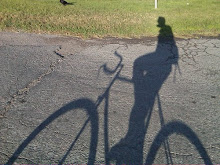For those who have never been to the Walk Score website, the purpose is to calculate the friendliness of different neighborhoods based on the proximity of amenities such as services, restaurants, etc. According to the Walk Score website, the algorithm used assigns the maximum number of points for amenities that are within a 1/4 mile of the location entered. While this is a good measure of walkability, I would argue that factors such as street design, traffic volume, speed limits, and neighborhood character would make the model Walk Score uses much more accurate and relevant.
To illustrate my point you can see below the streetscape of Phillips, the street on which I live. My address received a 69, meaning that only 27% of locations had higher walkscores than my house.


Now contrast my neighborhood's Walk Score with the one received by the location seen below. I randomly typed in an address along Brooks, a four lane arterial with speeds ranging from 35-45 with lots of traffic, congestion, business activity, and almost no cyclists or pedestrians.

This section of Brooks received a Walk Score of 83, 14 points higher or about 20% more "walkable" than where I live. I think its pretty intuitive just from the pictures of the two different locations which one would be more friendly to active transportation... and its not the one Walk Score recommends.

There is a lot more to getting people walking than just how close they live to given amenities or their job. Paramount is safety, or at least the perception of safety along design aesthetics. I would venture to guess most people would rather walk down a tree lined, quiet street with on street parking acting as a buffer, than a busy, loud arterial surrounded by parking lots and neon lights.
I think Walk Score might be broken.





3 comments:
This is a tough one. I get Walkscore's intent, but it's not granular enough--and granted, that's a tall order! Imagine trying to collect all the factors involved in walkability: sidewalk texture, traffic speed, weather, sidewalk width, & so on. It's a start, I suppose...
I agree, but I'd probably say that Walkscore is limited instead of broken. Another problem is that it doesn't take into account hard barriers like railroad tracks or Interstates. Walkshed is supposed to incorporate these elements, but I think it's only available in Philadelphia right now.
For a quick quantative measure of mix of uses, Walkscore is great. And I think it has lead a perception change among realtors and homebuyers. For street design and safety, I suppose the best you can do is check streetview (or go there).
Daniel...
I admit that calling Walk Score "Broken" is mostly hyperbole.
It has gotten average people (those not engaged in debating these issues like you and me) to think about location in a different way... MLS listings now have a rating for each house based on walkability.
But at the same time for those that don't understand the complexity of something like walkability I think the site gives a false impression of safety and of scientific method.
Post a Comment